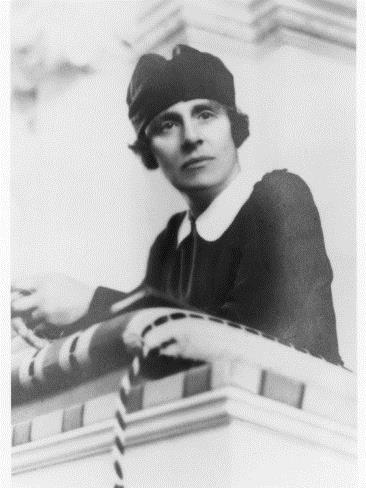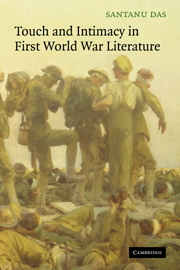 Deborah Chambers is Professor of Media and Cultural Studies at Newcastle University. Her most recent book is, Social Media and Personal Relationships: Online Intimacies and Networked Friendship (Palgrave Macmillan, 2013). In this post for the History of Emotions Blog she analyses the aspirations and anxieties associated with online friendship in the twenty-first century.
Deborah Chambers is Professor of Media and Cultural Studies at Newcastle University. Her most recent book is, Social Media and Personal Relationships: Online Intimacies and Networked Friendship (Palgrave Macmillan, 2013). In this post for the History of Emotions Blog she analyses the aspirations and anxieties associated with online friendship in the twenty-first century.
__________
Just before its shares were floated on the market in 2012, Facebook boasted that it hosted 125 billion total friendships. While this detail is intriguing, the figure is also totally mystifying. What does it mean? Why has the concept of ‘friendship’ been adopted by social media to describe and promote personal networks online? I explore this and related questions in my book, Social Media and Personal Relationships: Online Intimacies and Networked Friendship (2013). I discovered that the choice of the term ‘friend’ to describe all social connections on social network sites is no accident. In an earlier book, New Social Ties (2006) written just before social media exploded on our global networks, I explored changing social networks through the lens of friendship. I conclude that ‘friendship’ has become a powerful emblem of interpersonal democratisation in late modernity. Relationships between intimate partners, parents and children, and wider kin are now described as informal ties: more casual, ephemeral and egalitarian.’ Friends as family’ and ‘family as friends’ signify this shift in cultural values (Spencer and Pahl 2006). Despite continuing high levels of personal commitment and social responsibility in today’s personal and family relationships, more fluid ties have become part of the popular imagination (also see Chambers 2012).
‘Friendship’ signifies something reassuring and democratic during a period when social relationships are undergoing dramatic changes. Notions of mutual trust within equal and freely chosen ties – as opposed to hierarchical ties of duty – evoke the ‘pure relationship’ (Giddens 1991, 1992). The sphere of ‘the personal’ is a vital sphere of reciprocity which is being demanded on equal terms and described by friendship. This concept of ‘friendship’ has almost exclusively positive connotations, conjuring a sense of optimism about changing personal ties in late modernity. That’s why social network sites have adopted the term ‘friendship’ to describe online contacts.
Social network sites such as Facebook realized that the apparent flexibility, informality and conviviality of ‘friendship’ are deeply admired and coveted features of personal relationships in today’s society. The positive attributes of respect, mutual disclosure and companionship crystallised in ‘friendship’ offsets the pessimistic tones of academic and public discourses that invoke a crisis in relationships spoiled by digital technology.
Yet “Friends” on social network sites differ dramatically from “friends” in the traditional sense. A unique feature of these websites is that they display and publicise: they display our personal networks and publicise our friendships. Once quintessentially private, personal and intimate, these relationships are now rendered public. They must therefore be carefully managed. We are being “judged by the company we keep” in new, highly visible ways.
Online friendships are often characterised as a feature of today’s globalised networks. Yet for teenagers, among other users, this technology is experienced in a much more local manner. Social media technologies are providing a vital cultural framework for young people to explore the sense of choice and diversity sought in personal relationships. The heightened sense of agency and personal autonomy afforded by social media allows young people to manage and navigate their personal relationships on and offline. Being the most intense users of social media, this communication technology is now embedded in young peoples’ daily lives (see for example, Ito et al. 2012 and Livingstone et. al 2011).
Teenagers are using social media to transform identities and generate new forms of self presentation, interaction, and etiquette. A new kind of online friendship ranking emerges among the young, generating a mode of hyper-friendship. The distinctive qualities of today’s mediated friendship are, then, experienced much more acutely by young people than by adults. At the level of interpersonal relations, teenagers now find themselves making moral decisions about using social media. They nurture romances online and have to deal with the often painful public nature of break-ups online (Pascoe 2010, Gershon 2010). Deciding which medium to use for developing or ending a relationship depends on moral questions rather than just technical or economic considerations, leading to a re-socialisation of media (Gershon 2010; Madianou and Miller 2012).
Online friendships have become public displays of personal lives. Through the ritual of displaying, selecting and also ranking lists of personal connections, online Friends provide a context for self presentation by offering users an imagined audience that guides our behavioural norms (boyd 2011). Our lists of Friends become our imagined audience. Yet these opportunities for online friendship throw up serious challenges. The term ‘Friend’ is being applied to all declared connections whatever their nature or intensity. At the press of a button, strangers can become ‘friends’. Anonymized rumours can be spread, generating parental anxieties about stranger danger and the cyberbullying of children and teenagers by their peers.
Public anxieties have been prompted by the apparent lack of a sense of privacy on the internet and by a fascination with self-display by teenagers who use social media. These sites have been blamed not only for causing teenage addiction to social media but also for isolating young people from their parents. As such, new digital technology has become a major site of struggle – involving parents, teachers, the media and the state – about how young people’s use of digital technologies should be regulated.
Creating and networking online content now forms a fundamental resource for managing one’s identity, lifestyle and social relations. Some suggest these sites are structured to foster narcissistic skills of self-promotion (Buffardi and Campbell 2008). But, as with offline relationships, there are crucial checks and balances against overblown self-promotion since our offline and online communities overlap. Despite the problems associated with negotiating public and personal/private boundaries online, many internet users who share information about themselves discover benefits. People with social networking sites profiles are almost four times more likely to have been contacted from someone from their past as non-site users (Ellison et al. 2007). Social media like have become ideal tools for managing ‘personal communities’.
To understand the nature of today’s online friendships, I developed a theory of mediated intimacy in my study of social media and personal relationships. Today’s online connections comprise some key features. They are being articulated through a ‘friendship’ code which forms part of a broader, personalised yet public discourse. This friendship discourse involves a wider privileging and ritualization of social ties as elective ties of reciprocity. These networks are characterised by an informal register. Mediated intimacy also entails a staging and management of the self and involves the accumulation of ‘social capital’ (Ellison et. al 2011). Mediated relationships also evoke a sense of personal choice and individual control as part of a growing demand for democratic, pure relationships. Finally, today’s online friendships are shaped by moral issues associated with choice of medium used to connect with someone according to the level of intimacy and nature of the message.
So, within social aspirations to democratise interpersonal relationships, the concept of ‘friendship’ emerges as a powerful tool in shaping contemporary meanings of the self and social connectivity. As a symbol of the pure relationship, it requires a particular kind of ‘self’. Social network sites and online dating forums offer the perfect contexts for the continual updating of the ‘self’ required in today’s online self presentations. Today’s mediated friendship could be viewed as a form of ‘entrepreneurial individualism’ (Rose 1999). The latent colonisation of ‘friendship’ by market logic is concerning many users. It seems likely that commercialization, privacy and trust will be themes at the forefront of debates about the future of online ‘friendship’.
__________
Return to: Five Hundred Years of Friendship at the History of Emotions Blog
References
boyd, d. (2010) ‘Friendship’, in Ito, M., Baumer, S., Bittanti, M., boyd, d., Cody, R., Herr-Stephenson, B., Horst, H.A., Lange, P.G., Mahendran, D., Martinez, K.Z., Pascoe, C.J., Perkel, D., Robinson, L., Sims, C. and Tripp, L. (2010) Hanging Out, Messing Around, and Geeking Out: Kids Living and Learning with New Media, Cambridge, Massachusetts: MIT Press, pp.79-116.
Buffardi, L. E. and Campbell, K.W. (2008) ‘Narcissism and Social Networking Web Sites’, Personality and Social Psychology Bulletin, 34 (10) 1303-1314.
Chambers, D. (2006) New Social Ties: Contemporary Connections in a Fragmented Society,Basingstoke: Palgrave Macmillan.
Chambers, D. (2012) A Sociology of Family Life: Change and Diversity in Intimate Relations,Cambridge: Polity Press.
Chambers, D. (2013) Social Media and Personal Relationships: Online Intimacies and Networked Friendship,Basingstoke: Palgrave Macmillan.
Ellison, N., Steinfeld, C., & Lampe, C. (2007) ‘The benefits of Facebook ‘‘friends’’: Exploring the relationship between college students’ use of online social networks and social capital’, Journal of Computer-Mediated Communication, 12(3), 1143–1168.
Ellison, N.B., Steinfield, C. and Lampe, C. (2011) Connection strategies: Social capital implications of Facebook-enabled communication practices, New Media and Society 13(6) 873-892.
Gershon, I. (2010) The Breakup 2.0: Disconnecting over New Media, Ithica andLondon:CornellUniversity Press.
Ito, M., Baumer, S., Bittanti, M., boyd, d., Cody, R., Herr-Stephenson, B., Horst, H.A., Lange, P.G., Mahendran, D., Martinez, K.Z., Pascoe, C.J., Perkel, D., Robinson, L., Sims, C. and Tripp, L. (2010) Hanging Out, Messing Around, and Geeking Out: Kids Living and Learning with New Media, Cambridge, Massachusetts: MIT Press.
Giddens, A (1991) Modernity and Self-identity: Self and Society in the Late Modern Age. Cambridge: Polity.
Giddens, A. (1992) The Transformation of Intimacy: Sexuality, Love and Eroticism in Modern Societies. Oxford: Polity press.
Livingstone, S., Haddon, L., Görzig, A., and Ólafsson, K. (2011). Risks and safety on the internet: The Perspective of European children. Full Findings. LSE, London: EU Kids Available online (accessed 17 March 2014).
Madianou, M. and Miller, D. (2012) Migration and New Media: Trasnational families and Polymedia,London: Routledge.
Pascoe, C.J. (2010) ‘Intimacy’, in Ito, M., Baumer, S., Bittanti, M., boyd, d., Cody, R., Herr-Stephenson, B., Horst, H.A., Lange, P.G., Mahendran, D., Martinez, K.Z., Pascoe, C.J., Perkel, D., Robinson, L., Sims, C. and Tripp, L. (2010) Hanging Out, Messing Around, and Geeking Out: Kids Living and Learning with New Media, Cambridge, Massachusetts: MIT Press, pp.117-148.
Rose, N. (1999) Powers of Freedom,Cambridge:CambridgeUniversity Press.
Spencer, L. and Pahl, R. (2006) Rethinking Friendship: Hidden Solidarities Today, Princeton University Press.
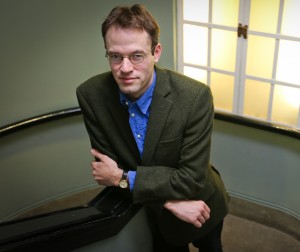 Dr Thomas Dixon is the presenter of ‘Five Hundred Years of Friendship‘ on BBC Radio 4 and the Director of the Centre for the History of the Emotions at Queen Mary, University of London. In this blog post he reflects on the history and ideology behind the idea that we can choose our friends.
Dr Thomas Dixon is the presenter of ‘Five Hundred Years of Friendship‘ on BBC Radio 4 and the Director of the Centre for the History of the Emotions at Queen Mary, University of London. In this blog post he reflects on the history and ideology behind the idea that we can choose our friends.
 And the world of the globally marketed and highly successful commercial product, Friends, brings us to the final ingredient of the modern friendship of choice: consumerism. The Scottish economist Adam Smith, the great prophet of the free market in the eighteenth century, put rational individual choice at the heart of his philosophy in The Wealth of Nations. Smith’s other great work was his Theory of Moral Sentiments, which explained the centrality of affectionate relationships to human society. But even in that work, Smith emphasised that the ‘prudent man’ would choose his friends not of the basis of ‘giddy admiration’ but by the ‘sober esteem of modesty, discretion, and good conduct’. It is to Adam Smith that we owe the idea that we are consumers in the emotional as well as the economic realm.
And the world of the globally marketed and highly successful commercial product, Friends, brings us to the final ingredient of the modern friendship of choice: consumerism. The Scottish economist Adam Smith, the great prophet of the free market in the eighteenth century, put rational individual choice at the heart of his philosophy in The Wealth of Nations. Smith’s other great work was his Theory of Moral Sentiments, which explained the centrality of affectionate relationships to human society. But even in that work, Smith emphasised that the ‘prudent man’ would choose his friends not of the basis of ‘giddy admiration’ but by the ‘sober esteem of modesty, discretion, and good conduct’. It is to Adam Smith that we owe the idea that we are consumers in the emotional as well as the economic realm.
 Dr Thomas Dixon
Dr Thomas Dixon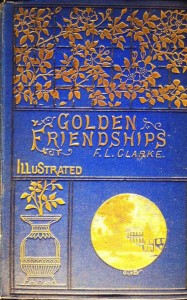
 But one of my favourite stories of a Victorian friendship, although one with a tragic ending, comes not from the records of Victorian schooldays, but instead from the experiences of a young boy whose greatest friendship was with a toy horse. My own little boy, who is four years old, has a bed full of cuddly toys that he calls ‘soft friends’ – with which he formed his earliest and strongest emotional bonds, other than those with his immediate family. And so the following story had particular resonance for me.
But one of my favourite stories of a Victorian friendship, although one with a tragic ending, comes not from the records of Victorian schooldays, but instead from the experiences of a young boy whose greatest friendship was with a toy horse. My own little boy, who is four years old, has a bed full of cuddly toys that he calls ‘soft friends’ – with which he formed his earliest and strongest emotional bonds, other than those with his immediate family. And so the following story had particular resonance for me. Professor Mark Peel
Professor Mark Peel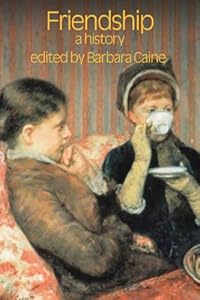 “In the first half of the twentieth century, a wider range of people came to regard a particular form of intimate and emotional friendship as a crucial component of a good life. More than family, kin or faith, friendship was the social glue of modernity. Friendship helped people manage, endure and even enjoy dramatic transformations, strengthened the horizontal bonds of age and shared experience, and nourished those who lived beyond sanctioned boundaries. . . Friendship was the conversation about who you had been, who you were and who you wanted to be. It was for the discussion of dilemmas and the rehearsal of new directions. Because you chose your friends, it also epitomised what was, for most people, a new degree of freedom to make their own way. What relatively few nineteenth-century people could enjoy became the realistic aspiration of many. Popular culture and popular conversation agreed on the growing significance of friends, and the importance of friendliness as a model for improving the relationships you had to have, such as those with family or neighbours. Cultural descriptions and prescriptions also focused on the links between friendship and successful selfhood: your friends, more than anyone, witnessed and assisted you develop a true sense of self. New forms of knowledge and leisure also shaped these understandings of friendship. More than philosophers and social scientists, advocates of friendship’s instrumental virtues—such as Dale Carnegie—and the producers of mass entertainment moulded the idea and the expectations of friendship among twentieth-century people.”
“In the first half of the twentieth century, a wider range of people came to regard a particular form of intimate and emotional friendship as a crucial component of a good life. More than family, kin or faith, friendship was the social glue of modernity. Friendship helped people manage, endure and even enjoy dramatic transformations, strengthened the horizontal bonds of age and shared experience, and nourished those who lived beyond sanctioned boundaries. . . Friendship was the conversation about who you had been, who you were and who you wanted to be. It was for the discussion of dilemmas and the rehearsal of new directions. Because you chose your friends, it also epitomised what was, for most people, a new degree of freedom to make their own way. What relatively few nineteenth-century people could enjoy became the realistic aspiration of many. Popular culture and popular conversation agreed on the growing significance of friends, and the importance of friendliness as a model for improving the relationships you had to have, such as those with family or neighbours. Cultural descriptions and prescriptions also focused on the links between friendship and successful selfhood: your friends, more than anyone, witnessed and assisted you develop a true sense of self. New forms of knowledge and leisure also shaped these understandings of friendship. More than philosophers and social scientists, advocates of friendship’s instrumental virtues—such as Dale Carnegie—and the producers of mass entertainment moulded the idea and the expectations of friendship among twentieth-century people.” “With its dramatised guides to selfhood, relationships, emotions and romance, and with its growing focus on talk, ‘lifestyle’, ‘reality’ and everyday living, television became the single most important place in which twentieth-century people could see how they might live, whether that meant changing or staying the same.” By the end of the century, we saw a “new wave of hugely successful performances of friendship’s pleasures, from Friends to Sex in the City and Will & Grace. If friendship’s revitalising properties seemed less certain to sociologists, philosophers and social temperature-takers, popular celebrations of enduring, intimate friends made a life without them one of the bleakest prospects that most people could imagine. These celebrations—and earlier ones such as The Golden Girls or The Mary Tyler Moore Show—also made clear the ways in which female friendships became even more central to popular as well as academic versions of ideal bonds. In movies and television shows, at least, the strongest friendships were between women and, from about the 1980s, between women and gay men. Male friendships did not completely disappear, but by century’s end, anxieties over friendlessness and the incapacity to make and keep friends seemed almost to assume that such problems mostly involved heterosexual men.”
“With its dramatised guides to selfhood, relationships, emotions and romance, and with its growing focus on talk, ‘lifestyle’, ‘reality’ and everyday living, television became the single most important place in which twentieth-century people could see how they might live, whether that meant changing or staying the same.” By the end of the century, we saw a “new wave of hugely successful performances of friendship’s pleasures, from Friends to Sex in the City and Will & Grace. If friendship’s revitalising properties seemed less certain to sociologists, philosophers and social temperature-takers, popular celebrations of enduring, intimate friends made a life without them one of the bleakest prospects that most people could imagine. These celebrations—and earlier ones such as The Golden Girls or The Mary Tyler Moore Show—also made clear the ways in which female friendships became even more central to popular as well as academic versions of ideal bonds. In movies and television shows, at least, the strongest friendships were between women and, from about the 1980s, between women and gay men. Male friendships did not completely disappear, but by century’s end, anxieties over friendlessness and the incapacity to make and keep friends seemed almost to assume that such problems mostly involved heterosexual men.” Dr James Ellison
Dr James Ellison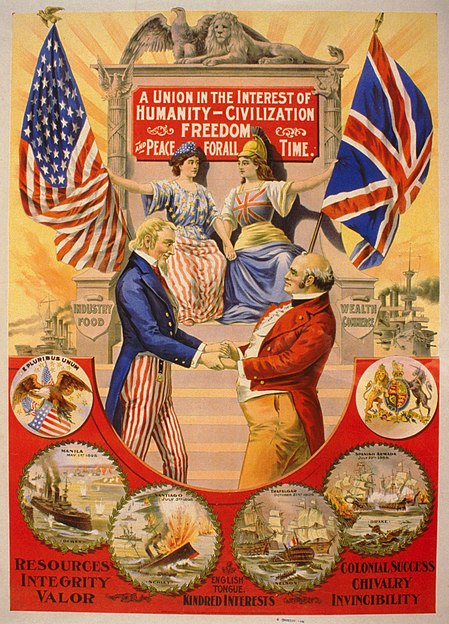

 Barbara Taylor
Barbara Taylor
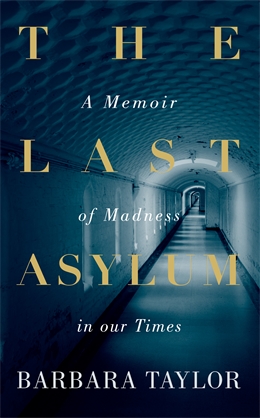


 Michael Kay
Michael Kay

 Sue Morgan
Sue Morgan